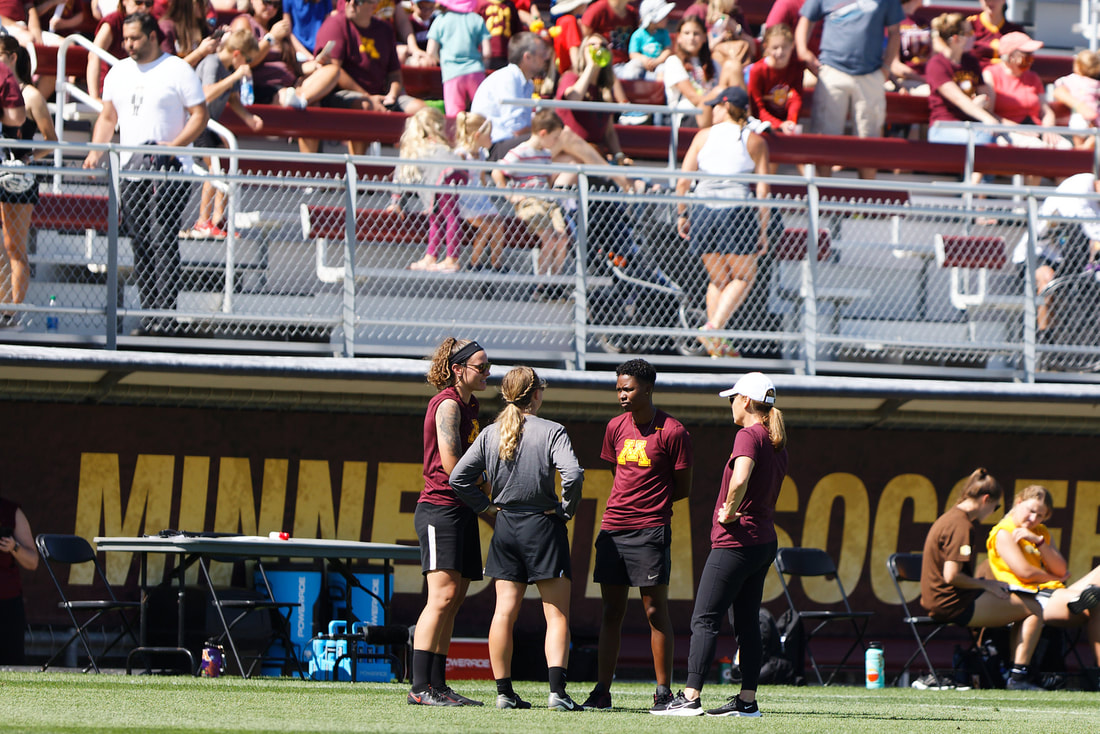|
As fans, the spring season can feel like a bit of a tease – a taste of cheering on our favorite college programs but also a reminder that we have to wait 5 more months for the next NCAA soccer season to come around. For those inside the Gopher Soccer program, however, this is the first time in years they’ve even been able to have a traditional spring season. In 2020, the spring season was cut short by the initial COVID shutdown. Then, Big Ten teams pushed their fall 2020 season into spring 2021 and, Minnesota specifically then had a coaching change that made even the summer of 2021 feel extra chaotic. So let’s get back to basic and refresh a bit on what the spring season is really about.
Broad benefits of the spring soccer season After the fall season ends, the time you’re able to train is understandably reduced as players enter their offseason. Then available training time is expanded to allow the team to practice together. And while the most visible part of this process for fans are the few exhibition matches the team may play, the day in-day out reps at training are really the protein of the spring season. Because the fall season involves two games a week, road trips across the entire country, and as much recovery time as true training time, maybe the simplest benefit of the spring season is the ability to practice and train at all. “You really dont get a huge opportunity to train your group on different things [in the fall,” Head Coach Erin Chastain explains. “You’re really just playing games and recovering. What’s nice about the winter and nice about the spring is just training our group.”
Digging a little deeper Having players on the training pitch consistently then gives coaches (and players) the chance to dig a little deeper and start noticing which players naturally combine with each other, how they’re complementing each other, who’s fitting in a new role, etc. On our recent show with Sota Soccer, Assistant Coach Maya Hayes said players don’t necessarily spend a ton of energy worrying about cementing their role or cracking the fall rotation during spring – it just isn’t really their mindset, even for the younger players. But on the flip side, the older players do need to start thinking about the fall. More specifically “for those more veteran players their big thing is ‘what legacy do they want to leave’?” Hayes said. This might be an absurd thing to write about a team that ultimately finished outside the conference tournament field in the Big Ten, but last year’s Gopher Soccer team at times showed as high of a ceiling as any U of M team I’ve covered. They obviously fell well below the Big Ten Championship/NCAA Tournament win type finishes that other squads have achieved the last half decade, but when they were *on*, they were special. And with a full offseason together for the first time in years (and only really two players gone from last year’s squad), this fall’s veterans should be setting a high bar for themselves to lead this team in a way that helps the squad get close to that ceiling much more consistently.
What to watch for As mentioned above, only two major players (Kenz Langdok, Patricia Ward) from last year’s rotation have moved on. That means that even as Chastain and the staff look to broaden the rotation a bit, there aren’t exactly too many glaring holes in the starting lineup. With Langdok departing the right back spot, at least one backline position is up in the air. And since Elizabeth Overberg was (admirably, capably) filling in as a centerback for injured Alana Dressely, you could see multiple positions shift on the backline. Can Dressely come back and start in the middle next to Delaney Stekr? That seems to be the hope. Could Overberg maybe take her talents to outside back since Lauren Donovan seems like a 90 minute beast at holding mid for now? Possibly. Abi Frandsen has shown some serious chops at outside back, so whether at left or right she is a known quantity. The other outside back spot might be the most truly open spot on the roster. Hanging in the balance is how the group melds together overall and how far the coaching staff drifts into new formations or tactics. Even if the tactics stay largely the same but the formation shifts a bit from the 4-4-2 to 4-3-3 and even just a *little* more of a high line press, does that mean the top line rotates a bit more? If the teams sticks to their 4-4-2 but more players show some nice grit and/or combination at outside mid does that push the staff to move off the 80, 90, 100 minute games we sometimes saw from Kenna Buisman and Meg Gray (partly out of necessity, partly because they have the fitness to handle it if needed) and broaden that outside mid rotation a bit? Spring games aren’t exactly meant to represent a direct preview of what teams will do months later during the official NCAA season, but for individual players and how those players combine with those around them, it can be a bit of a preview for what’s at least possible. So when spring games start in April, we’ll be watching to see who jumps out. Because it just might be the first sign of who’s ready to grow their role next fall. Road trip possibilities If you happen to want to take a drive and watch some Gopher Soccer on the road this spring, you also might have the chance to catch some NWSL games while you’re at it. By coincidence, both of the Gophers’ road trips overlap with nearby Challenge Cup matches for the Kansas City Current.
0 Comments
Leave a Reply. |
Full Archive
July 2024
|

